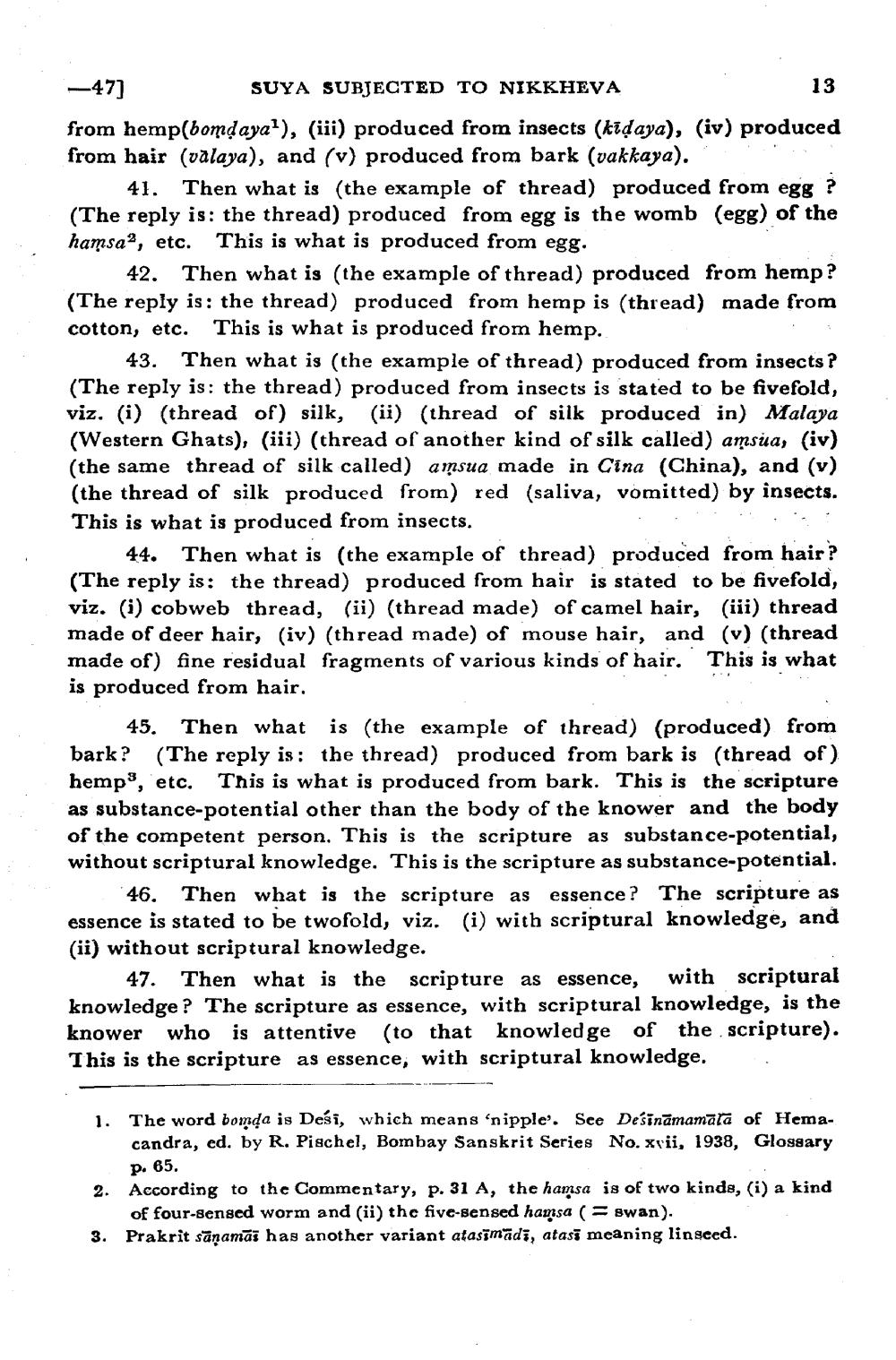________________
-47]
SUYA SUBJECTED TO NIKKHEVA
from hemp(bomḍaya1), (iii) produced from insects (kīḍaya), (iv) produced from hair (valaya), and (v) produced from bark (vakkaya).
13
41. Then what is (the example of thread) produced from egg (The reply is: the thread) produced from egg is the womb (egg) of the hamsa2, etc. This is what is produced from egg.
42. Then what is (the example of thread) produced from hemp? (The reply is: the thread) produced from hemp is (thread) made from cotton, etc. This is what is produced from hemp..
43. Then what is (the example of thread) produced from insects? (The reply is: the thread) produced from insects is stated to be fivefold, viz. (i) (thread of) silk, (ii) (thread of silk produced in) Malaya (Western Ghats), (iii) (thread of another kind of silk called) amsia, (iv) (the same thread of silk called) amsua made in Cina (China), and (v) (the thread of silk produced from) red (saliva, vomitted) by insects. This is what is produced from insects.
44. Then what is (the example of thread) produced from hair? (The reply is: the thread) produced from hair is stated to be fivefold, viz. (i) cobweb thread, (ii) (thread made) of camel hair, (iii) thread made of deer hair, (iv) (thread made) of mouse hair, and (v) (thread made of) fine residual fragments of various kinds of hair. This is what is produced from hair.
45. Then what
is (the example of thread) (produced) from bark? (The reply is the thread) produced from bark is (thread of) hemp3, etc. This is what is produced from bark. This is the scripture as substance-potential other than the body of the knower and the body of the competent person. This is the scripture as substance-potential, without scriptural knowledge. This is the scripture as substance-potential.
46. Then what is the scripture as essence? The scripture as essence is stated to be twofold, viz. (i) with scriptural knowledge, and (ii) without scriptural knowledge.
47. Then what is the scripture as essence, with scriptural knowledge? The scripture as essence, with scriptural knowledge, is the knower who is attentive (to that knowledge of the scripture). This is the scripture as essence, with scriptural knowledge.
1.
The word bomda is Desi, which means 'nipple'. See Desinamamala of Hemacandra, ed. by R. Pischel, Bombay Sanskrit Series No. xvii, 1938, Glossary p. 65.
2. According to the Commentary, p. 31 A, the hamsa is of two kinds, (i) a kind of four-sensed worm and (ii) the five-sensed hamsa (= swan).
3. Prakrit sanamas has another variant atasimadi, atass meaning linseed.




